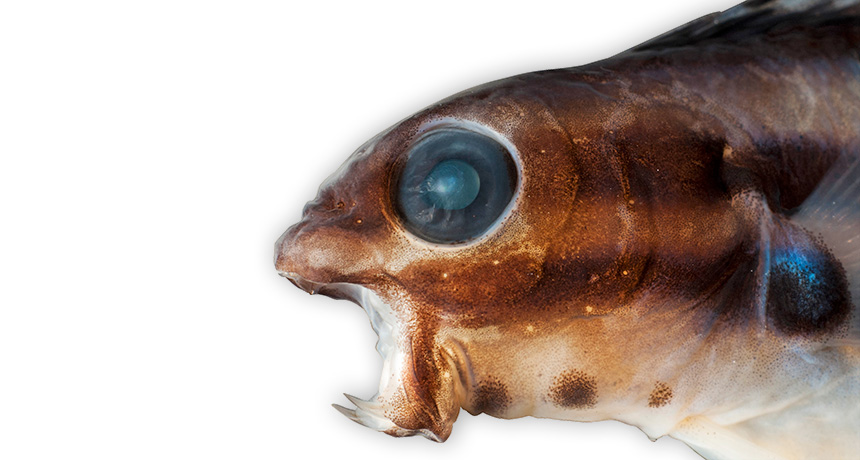Blennies have a lot of fang for such little fishes

After a recent flurry of news that fang blennies mix an opioid in their venom, a question lingers: What do they need with fangs anyway? Most eat wimpy stuff that hardly justifies whopper canines.
Not that fang blennies are meek fishes.
“When they bite, they bite savagely,” says Bryan Fry of the University of Queensland in Brisbane, Australia. “If these little jobbies were 3 meters long, we’d be having to cage dive with them.” Real-world blennies, however, grow to only about the size of a cocktail sausage.
These little beasts probably got their big teeth before evolving venom, says Nicholas Casewell of the Liverpool School of Tropical Medicine in England. That’s jusssst backward, snakes might say, as they evolved their venom first. Yet when Casewell, Fry and colleagues put together an evolutionary family tree for the blennies, the one genus with both fangs and venom branched off amid four genera that are all fang and no toxins, Casewell, Fry and colleagues report in the April 24 Current Biology.
Those with venom aren’t that scary to humans. Fish venoms tend to cause excruciating pain, says Fry, who adds from personal experience that “sting” sounds deceptively benign for what a stingray delivers (SN: 4/29/17, p. 28). A venomous fang blenny has yet to nail him, but he hears that others have felt little more than a toothy nip.
“There’s no real reason for most of these fish to have fangs to help them feed,” Casewell says. Many prey on small invertebrates or even floating plankton, which is about as hard to subdue as chicken soup.
The fangs, however, are useful for fending off predators, Casewell suggests. Blennies have no spiky fins or spines, the more usual defensive weapons in fish. Male-versus-male competition may have been another force for fang evolution; males stab each other during breeding season.
When fangs evolved, whatever the reason, they became a useful conduit for venom, Casewell and Fry propose. Once some blennies evolved venom, “all these crazy selection pressures started coming in,” Fry says. Forces of natural selection nudged nonvenomous fang blennies toward colors and stripes similar enough to those of their venomous cousins to discourage attacks from an educated predator.
The mimics take advantage, often brazenly swimming up to bigger fish to bite off some scales and mucus for a snack. “These fish are little jerks,” Fry says. “They should be called jerk blennies.”